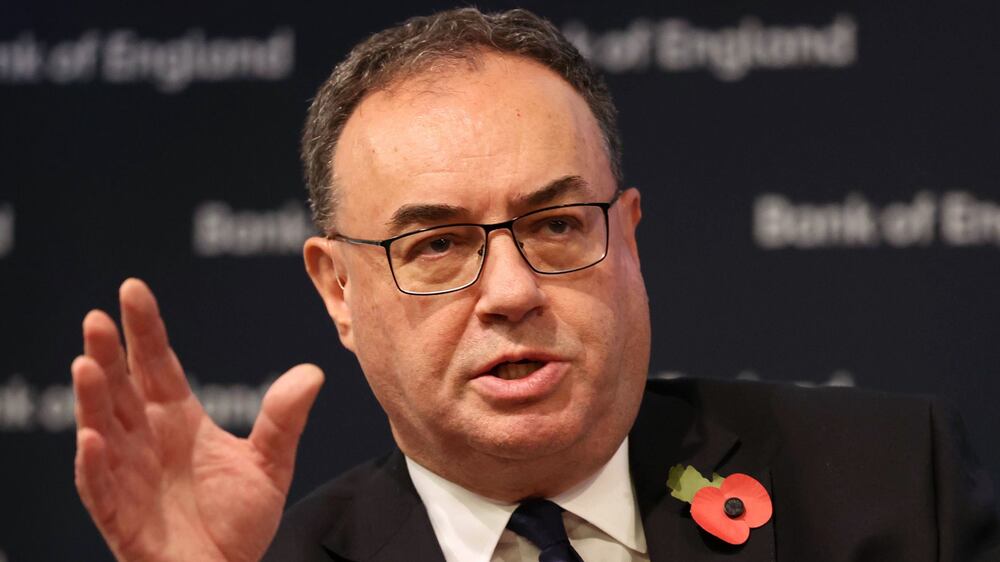The US Federal Reserve and the Bank of England kept rates on hold as expected this week, at 5.5 per cent and 5.25 per cent, respectively.
The European Central Bank did the same last week, keeping the main refinancing rate at 4.5 per cent.
All three decisions were in line with market expectations, and Emirates NBD believes that interest rates in these three key markets have reached their peak in the current cycle.
However, none of the post-meeting commentary from officials closed the door on further tightening, should inflation remain stickier than expected. Instead, central banks have signalled that policy rates are probably sufficiently restrictive to bring inflation back to their 2 per cent targets over the next 18-24 months.
Economic data has allowed the three major central banks to give themselves more time to assess whether monetary policy is indeed tight enough, or whether further rate increases are needed to bring inflation to heel.
Bank of England keeps interest rates at 15-year high

In the US, despite astonishingly strong gross domestic product growth of 4.9 per cent in the third quarter, there are indications that the labour market is slowing and wage pressures are easing.
Only 150,000 new jobs were added in October, the smallest increase since June and less than analysts had expected. While some of the slowdown in the jobs growth was due to the car workers’ strikes, which have now ended, other sectors also saw a decline in employment last month.
Furthermore, the unemployment rate ticked up to 3.9 per cent last month, the highest since the start of 2022, while average hourly earnings growth slowed to only 0.2 per cent on a monthly basis and 4.1 per cent annually in October.
A better indicator of wage pressures – the employment cost index, which measures both the direct and indirect costs of employing people – slowed to 4.3 per cent year on year in the third quarter, the weakest growth since the fourth quarter of 2021.
At the same time, productivity growth seems to have accelerated in the third quarter, which is also disinflationary.
There are several reasons to believe that the strong US economic growth in the third quarter may not be repeated in the final quarter of the year.
Survey data in October pointed to renewed decline in the manufacturing sector, although again this may have been due to the impact of the car worker strikes, and thus temporary.
Consumers with student loans will have less discretionary income to spend as those loan payments have restarted, weighing on private consumption, and there is still the threat of a government shutdown if Congress cannot pass a continuing budget resolution before November 17.
With the risks to the economy seemingly skewed to the downside, it may be fair to ask why the market is not pricing rate cuts earlier than the middle of next year.
The primary reason is that inflation remains well above target, with the headline consumer price index at 3.7 per cent in September, up from 3 per cent in June. Core inflation is even higher at 4.1 per cent year on year in September.
If oil prices remain at current levels through the first half of next year, there is a good chance that headline inflation will continue to rise over that period, making it difficult for the Fed to consider easing monetary policy, even if unemployment continues to tick higher.
Indeed, higher unemployment is embedded in the Fed’s own economic forecasts. It expects unemployment to be in a range of 3.9 per cent to 4.4 per cent a year from now, indicating that further loosening in the labour market will be necessary to return inflation to target.
Why is everything so expensive right now?

In the UK and the eurozone, economic conditions are significantly weaker than in the US. The Eurozone's GDP is already in contraction in the third quarter and the UK economy is not far off.
Preliminary data for October showed a sharp slowdown in eurozone inflation to 2.9 per cent on an annual basis from more than 5 per cent in the summer, but officials have stressed that the battle against inflation is not won and that it is very premature to talk about rate cuts.
UK inflation remains the outlier at 6.7 per cent year on year in September, and services inflation is particularly high at 6.9 per cent annually.
Nevertheless, policymakers voted to keep rates on hold for second meeting in a row, and while they left open the option of further increases in the future, it seems unlikely they will deliver on this with the economy on the brink of recession.
The outlier in terms of central banks remains Japan, where monetary policy remains ultra-loose in comparison with other advanced economies.
While the Bank of Japan tweaked its target on the 10-year bond yield to 1 per cent last week, the policy rate remains negative even as inflation sits at about 3 per cent year on year.
The yen has been the biggest casualty of this wide interest rate differential, weakening almost 15 per cent against the US dollar so far this year.






